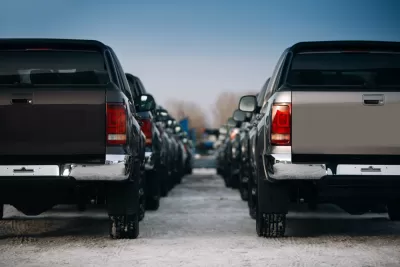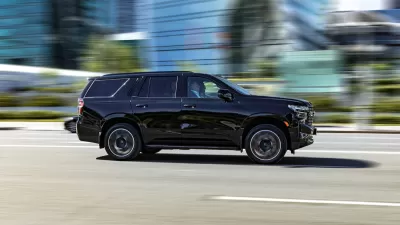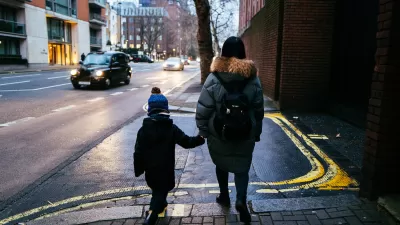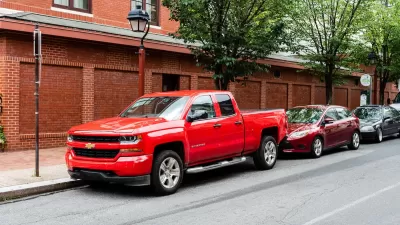A new study links bigger vehicles to a sharp increase in pedestrian deaths over the last decade.

According to an article from The Associated Press published on Oregon Live, new research confirms that people driving larger vehicles are more likely to hit pedestrians while making turns.
A study from the Insurance Institute for Highway Safety blames vehicle size and design for rising pedestrian death rates. The study's authors point to the increased number of pedestrian deaths despite the reduction in driving during the pandemic. In 2020, pedestrian deaths were up 50 percent from 2009.
While the authors note the need for more research on the topic of vehicle design, they suggest that the front "A-pillars" of large SUVs and taller hoods create bigger blind spots that prevent drivers from seeing pedestrians. Data from North Carolina show that pickup trucks were 42 percent more likely to hit pedestrians than smaller cars during left turns, while SUVs had a 23 percent higher chance.
The report suggests improvements that automakers can make to improve safety, including smaller A-pillars made of lighter, stronger materials, design that pays more attention to sight lines, and automatic emergency braking.
FULL STORY: Pedestrians increasingly in peril from SUVs, larger vehicles, study says

Maui's Vacation Rental Debate Turns Ugly
Verbal attacks, misinformation campaigns and fistfights plague a high-stakes debate to convert thousands of vacation rentals into long-term housing.

Planetizen Federal Action Tracker
A weekly monitor of how Trump’s orders and actions are impacting planners and planning in America.

In Urban Planning, AI Prompting Could be the New Design Thinking
Creativity has long been key to great urban design. What if we see AI as our new creative partner?

King County Supportive Housing Program Offers Hope for Unhoused Residents
The county is taking a ‘Housing First’ approach that prioritizes getting people into housing, then offering wraparound supportive services.

Researchers Use AI to Get Clearer Picture of US Housing
Analysts are using artificial intelligence to supercharge their research by allowing them to comb through data faster. Though these AI tools can be error prone, they save time and housing researchers are optimistic about the future.

Making Shared Micromobility More Inclusive
Cities and shared mobility system operators can do more to include people with disabilities in planning and operations, per a new report.
Urban Design for Planners 1: Software Tools
This six-course series explores essential urban design concepts using open source software and equips planners with the tools they need to participate fully in the urban design process.
Planning for Universal Design
Learn the tools for implementing Universal Design in planning regulations.
planning NEXT
Appalachian Highlands Housing Partners
Mpact (founded as Rail~Volution)
City of Camden Redevelopment Agency
City of Astoria
City of Portland
City of Laramie





























